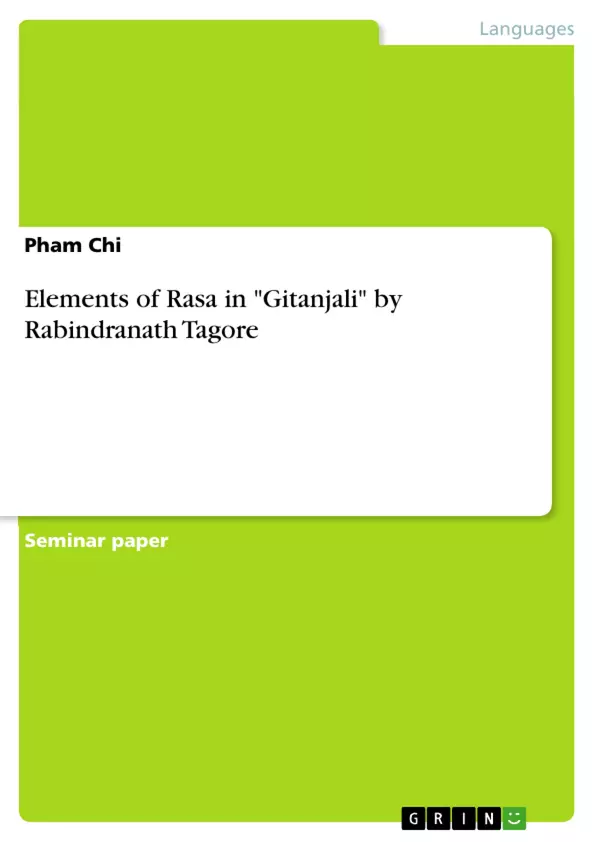Rasa (flavor , sentiments , aesthetic delight , flavor of mood , taste, feeling ) is the principle which encompasses the entire body of Indian literature. Although other literary theories such as Dhvani (suggestion, implication), Alankara (figure of speech) are also important terms of Indian aesthetics and poetics, these theories either originated in Rasa or appear in conjunction with it.
Rasa is typical of both Indian poetics and Eastern poetics. As one type of Eastern poetics, Rasa can be used to enrich Vietnamese poetics and literary theory, which now is mainly preoccupied with Western viewpoints. In addition, Indian culture has had significant influence on Vietnamese culture, as a result Buddhism is present in all of Vietnam, and Hinduism in Cham and Khmer areas .
Inhaltsverzeichnis (Table of Contents)
- Introduction
- Rasa studies in Vietnam
- The origin of the term of Rasa
- The definition of Rasa
- Rasas and their relationship
- The application of Rasa theory to Rabindranath Tagore’s Gitanjali
- Tagore studies in Vietnam
- The pathetic sentiment in Gitanjali
- The rasa of marvelousness in Gitanjali
- The peaceful sentiment - the dominant rasa of Gitanjai
Zielsetzung und Themenschwerpunkte (Objectives and Key Themes)
This research explores the Rasa theory, a fundamental principle of Indian literature, and examines its application to Vietnamese literary studies, particularly in the analysis of Rabindranath Tagore's Gitanjali. The research aims to provide a comprehensive overview of the Rasa theory and its application to non-Indian literature.
- The origin and evolution of the Rasa concept in Indian aesthetics
- Analysis of the Rasa theory in Vietnamese literary scholarship
- Application of the Rasa theory to Rabindranath Tagore’s Gitanjali
- The various Rasas, their relationships, and their manifestation in Gitanjali
- The potential of the Rasa theory to enhance Vietnamese literary studies
Zusammenfassung der Kapitel (Chapter Summaries)
The introduction provides a background on the Rasa theory and its significance in Indian literature. It also discusses the history of Rasa studies in Vietnam and highlights the need for a deeper understanding of the theory.
The chapter "Rasa studies in Vietnam" examines the origin of the term Rasa and traces its development within Indian aesthetics. It then analyzes Vietnamese interpretations of the Rasa concept, highlighting their strengths and weaknesses.
The chapter "The application of Rasa theory to Rabindranath Tagore’s Gitanjali" begins with a brief overview of Tagore studies in Vietnam. It then focuses on analyzing Gitanjali through the lens of the Rasa theory, exploring the pathetic sentiment, the rasa of marvelousness, and ultimately, the dominant rasa of peace.
Schlüsselwörter (Keywords)
Key terms and concepts explored in this research include Rasa, Indian poetics, Vietnamese literature, Rabindranath Tagore, Gitanjali, aesthetic delight, emotion, sentiment, pathos, marvelousness, peace, and the potential application of the Rasa theory to diverse literary traditions.
- Citation du texte
- Pham Chi (Auteur), 2010, Elements of Rasa in "Gitanjali" by Rabindranath Tagore, Munich, GRIN Verlag, https://www.grin.com/document/312450



